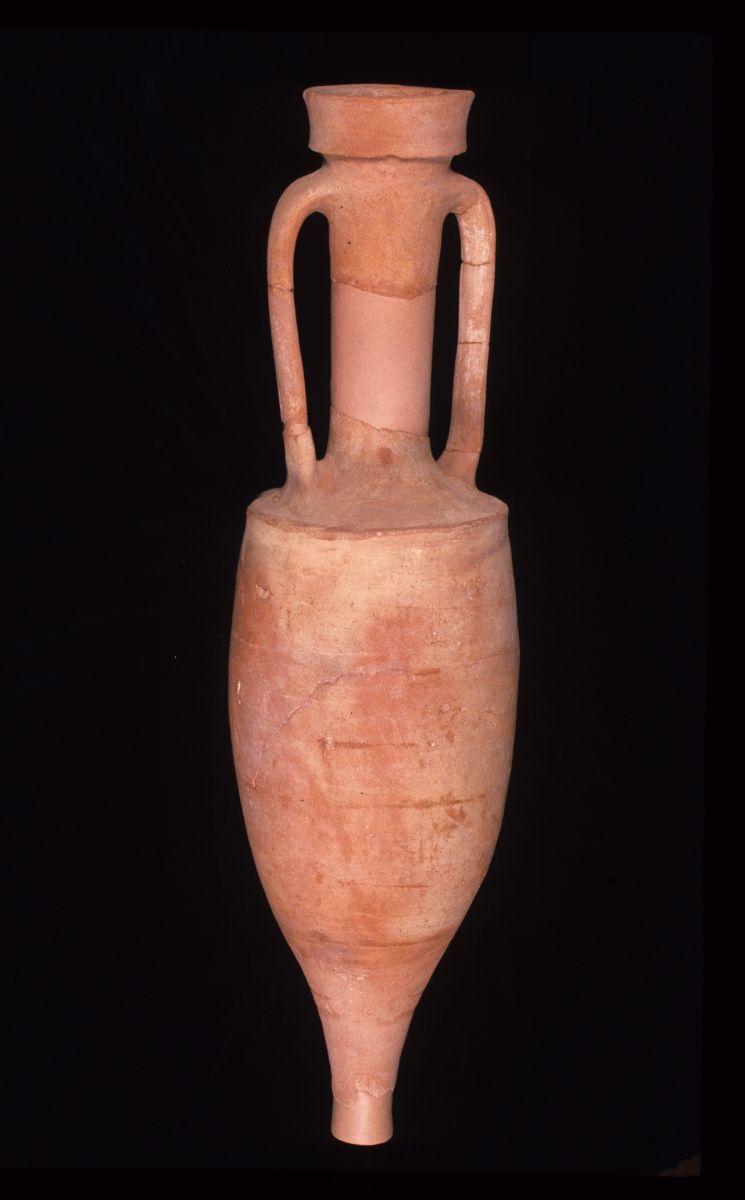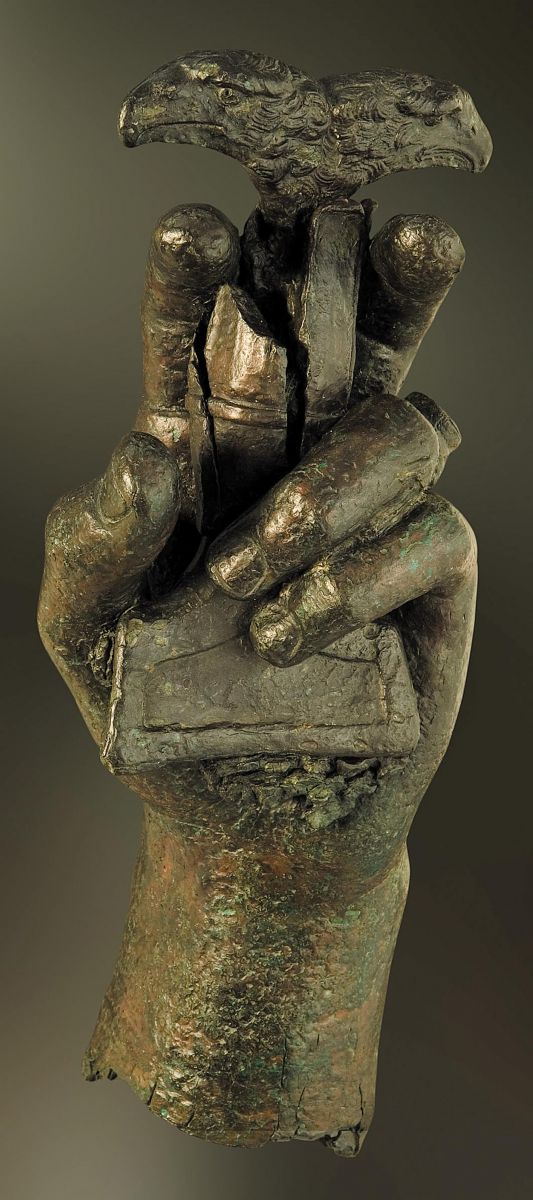PART INFORMATION
ROMAN CULTURE
Name: Amphora of wine from Tossal de la Cala

Description: This is a ceramic vessel from the Roman-Republican period that was used to hold wine. It is an amphora with a fusiform body, a wide rim and a solid pivot at the base. The cylindrical neck has two vertical ribbon handles that reach the shoulders, highlighted by a strong hull. Its capacity is approximately 26 to 27 litres.
Chronology: Roman Republican, late 2nd-early 1st century BC.
Location: Tossal de la Cala, Benidorm
Material: Ceramics
Technique: Modelled on a lathe
Dimensions: Height, 118cm; maximum diameter, 32cm; rim diameter, 15.5cm.
Name: Funerary inscription of the Tossal de Manises
.jpg)
Description: Roman funerary inscription, in Latin and with abbreviations, made on a marble base, in square capital script with a cursive tendency. The transcription is as follows: P(ublius)Astrani//usVenustus//IIIIIIvir Aug(ustalis)//Lucentis annor(um) XXIII//T(e) r(ogo)p(raeteriens)d(icas)s(it)t(ibi)t(erra)levis which translates as. Publius Astranius Venustus, Sevir Augustal of Lucentes, aged 23. I beg you, wayfarer, to say: May the earth be light to you.. Funerary inscriptions generally accompanied Roman burials, and from them we can obtain information about the name of the deceased, his origins, the positions he held, the age at which he died and some of his merits. They may be accompanied by an expression asking the traveller who reads them to request the repose of the deceased.
Chronology: High-Imperial Roman, 2nd century AD.
Location: Tossal de Manises, Alicante
Material: Marble
Technique: Carving and engraving
Dimensions: Height, 31.1cm, width, 28.4cm, thickness, 2cm.
Name: Bronze strigil from the Tossal of Manises

Description: It is an element of Roman hygiene and grooming. The strigil was used to remove oils and ointments that were applied to the body as part of personal grooming. The bow-shaped part was slid across the body and shaken in the air so that the collected contents fell to the ground. This one is decorated at the top and has a seal at the bottom. It also has a slit perforation for hanging.
Chronology: Romana
Location: Tossal de Manises, Alicante
Material: Bronze
Technique:
Dimensions: Length, 170mm; width, 12mm.
Name: Bronze sculpture hand from the Lucentum Forum

Description: The left hand of a larger-than-life bronze sculpture holding a sword called the parazonium. The parazonium The sword is the sword of the high officials of the Roman army, of emperors and the attribute of certain gods. The sword is decorated on the distal part with five elongated leaves resembling a chalice, and on the pommel with two eagle's heads facing in opposite directions. On the ring-finger is a ring decorated with the lituusThe curved, knotless staff of the Roman augurs.
Chronology: High-Imperial Roman (1st century AD)
Location: Tossal de Manises,Lucentum
Material: Bronze
Technique: Lost wax and assembly
Dimensions: Length, 35cm; width, 11.2cm. Weight: 1,110kg. The height of the complete sculpture is estimated at 2.2m.

